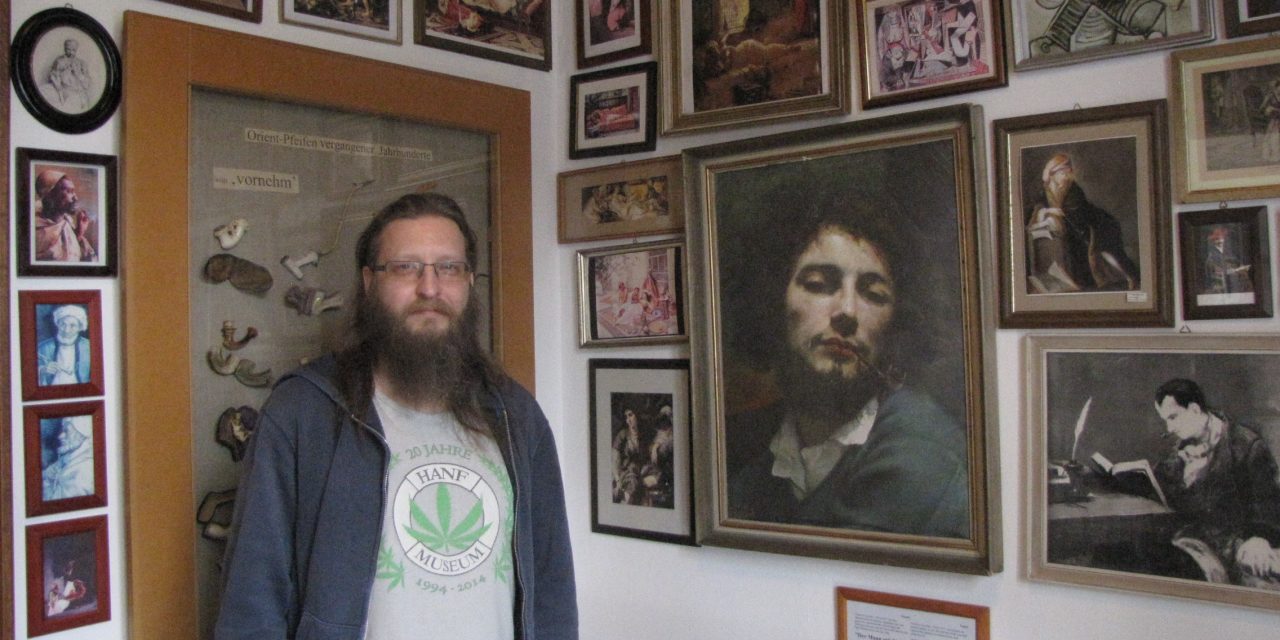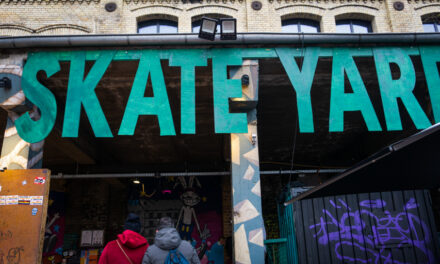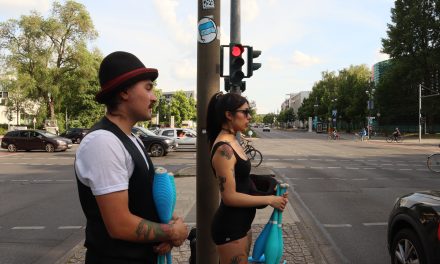March twenty-second was a monumental day for Steffen Geyer, as the Bundestrat passed the Cannabisgessetz, making the first pillar of recreational cannabis legalisation in Germany – possession of 25g in public, 50g in private and small home-growing – come into effect as of Apr. 1.
Geyer is a seasoned cannabis activist who is currently the Director of the Berlin Hanf (hemp) museum. On that fateful Friday, the museum held a screening to watch the decision be made by the government.

Steffen Geyer (right) in the basement of the Hanf museum. Photo taken by Nkele Martin on Apr. 10, 2024.
“On the twenty-second of March, we didn’t know if this will be a day of victory, or a day of tears,” he said. “It was a really nice day for me. I was grinning for hours, making plans for April first and how to party.”
With legalisation achieved, the new focus for former legalizers like Geyer is the fight against stigma surrounding cannabis and its users, one that he is confident will end in victory. “This [stigma] will go away in the next years. This is changed forever. Nobody can take this back,” he said.
Stigma: Then and Now
Geyer says the stigmatisation of Cannabis in Germany can be dated to the closure of the second world war. “There was a shift in the mind of drug policy,” he said, unlit joint in hand. “Before the second world war, drug policy was trade policy. After, it became health policy.” After a long push, cannabis was added to the Betäubungsmittelgesetz, the German narcotics law in 1971. Since then, possession of Cannabis could yield the same punishment as heroin or cocaine.
An activist for over 20 years, Geyer has felt the stigma throughout his adult life. The most impactful, he said, was an incident in 2012, when he did a tour across the country to educate about cannabis. Demonstrations he did at the time ranged from public discussions to handing out hemp food. At a demonstration, he was accused of lying to the public.
“There were patients talking about the way cannabis is helping them, but the public said ‘are you liars? You only want to smoke pot.’ There were old women that were spitting on us, because we were ‘talking lies in public.’”
Stigmatisation manifests itself in daily life, too, says Geyer.
“If you’re a pothead looking for a flat, it’s harder to find. If you’re looking for a job, it’s harder to find. If you have one prosecution for cannabis in your record, every contact with the police, you empty out your pocket.”

Oliver Waack-Jürgensen in the basement of the Hanf Museum in Berlin. Photo taken by Nkele Martin on April 10, 2024.
That sentiment resonates with Oliver Waack-Jürgensen, a board member of the German Association of Cannabis Social Clubs.
“It was always a problem in jobs, a problem in school, in my family,” he said. “this made me pull back…it was a very nomadic, unsettled life for a long time.”
How Legal is Legal?
While stigmatisation may be decreasing in the country, Geyer and Waack-Jürgensen believe the laws surrounding legalisation have been influenced by that same stigma.
The framework of the first pillar makes buying, consuming, and operating a social club tricky.
Social clubs will be limited to 500 members each, who can only be a member of one club, and each member will be limited to purchasing 50 grams a month. Once receiving their cannabis, members will not be permitted to smoke inside, a highly restrictive policy, according to Waack-Jürgensen.
Geyer brought to light another long standing policy, a ban on publicly promoting cannabis and social clubs, which will eventually be applied to commercial distribution, too. “You will not see these social clubs because it’s illegal to promote them. They have to be discreet. So if you step in front of a cannabis club, you will not recognize it. Which is kind of crazy,” he said. “[These laws are] part of the mindset that ‘cannabis is bad, don’t do it. We have to avoid anyone that is a cannabis consumer.’ This part of the stigma is really strong,” said Geyer.
“They try to force us into privacy,” said Waack-Jürgensen. “I think it’s more like a little punishment.”
“It’s still the most complicated, most bureaucratic way you can handle legalisation. Welcome to Germany,” Geyer joked.
Breaking Barriers
Geyer says legalisation opens a new avenue to start conversation about cannabis’ use and the stigma that surrounds it, and visibility is an important step in tackling it.
“You have to be visible. You have to be the next door neighbour, the colleague at work. The brother, the son and the daughter. You have to show that you’re just human,” he said.
Oliver-Waack-Jürgensen on the importance of visibility to fight stigma.
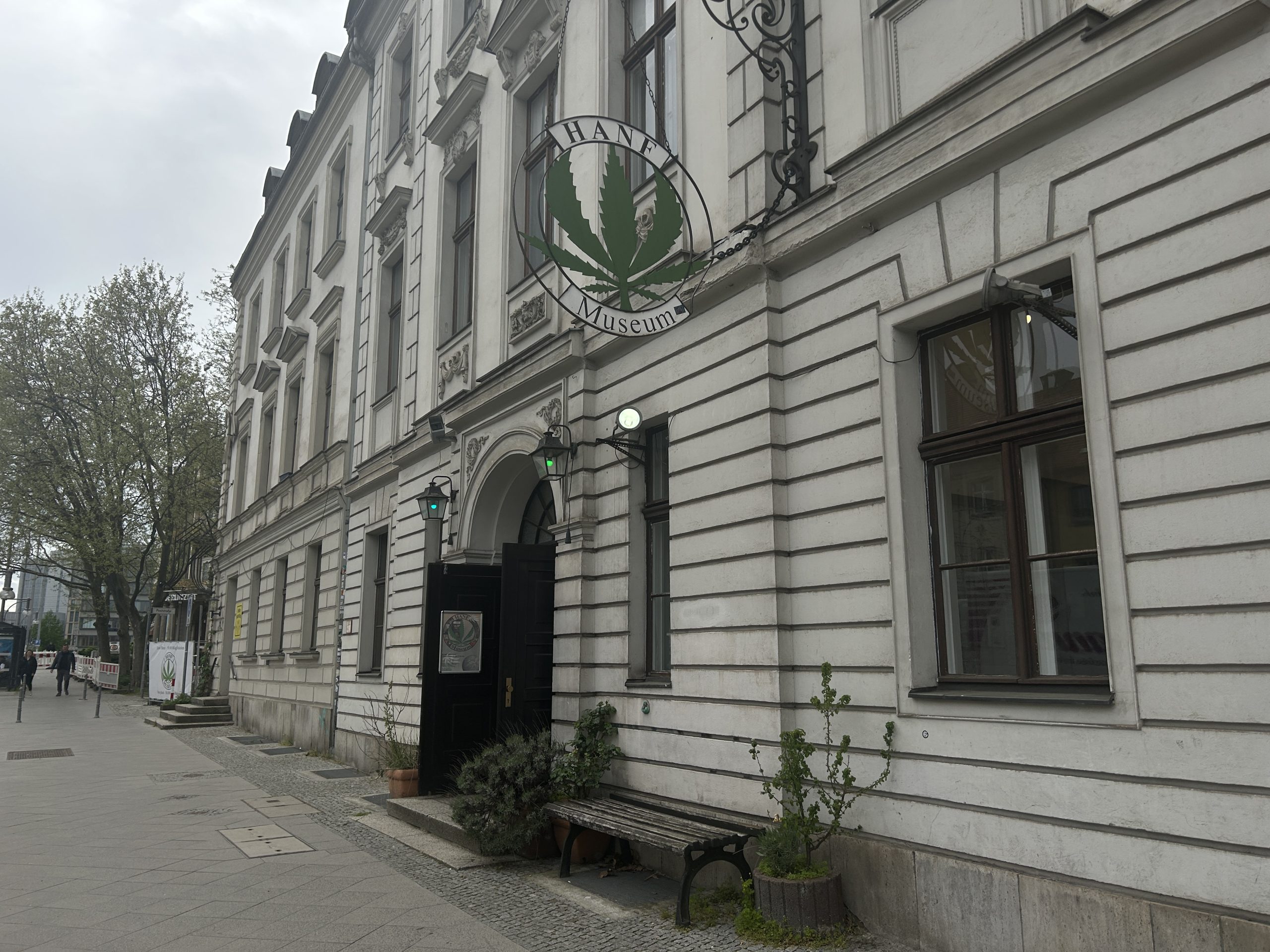
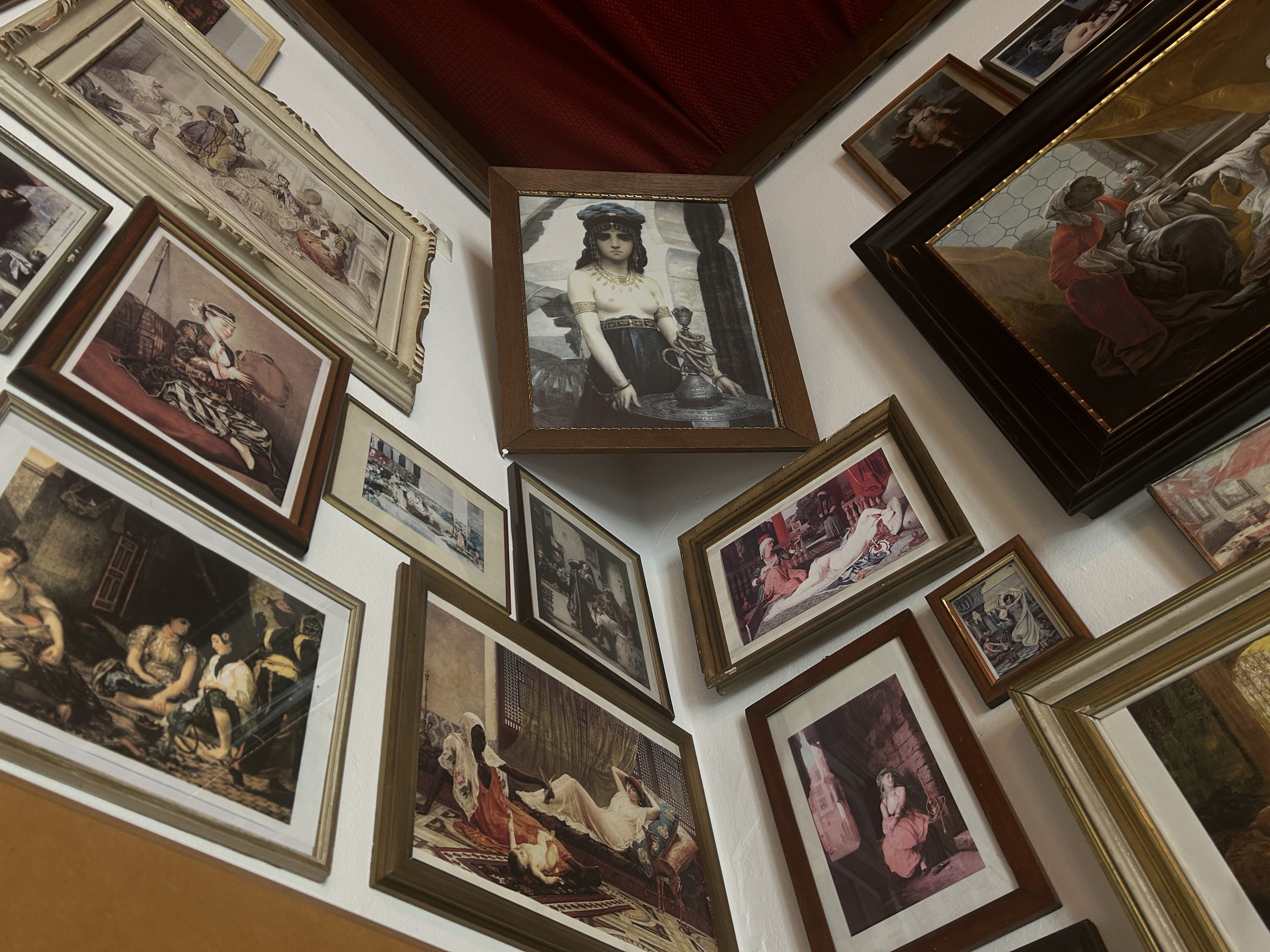
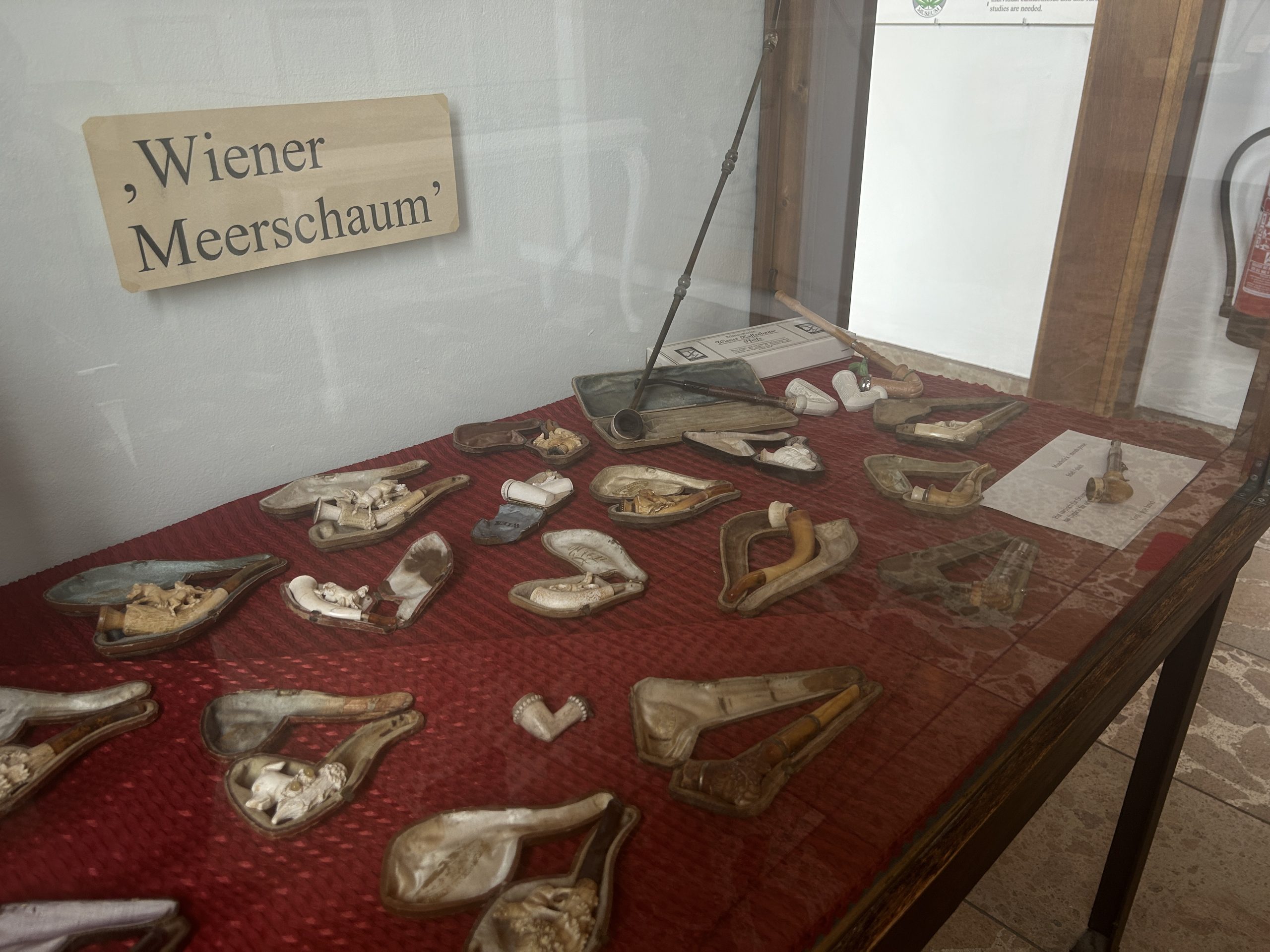

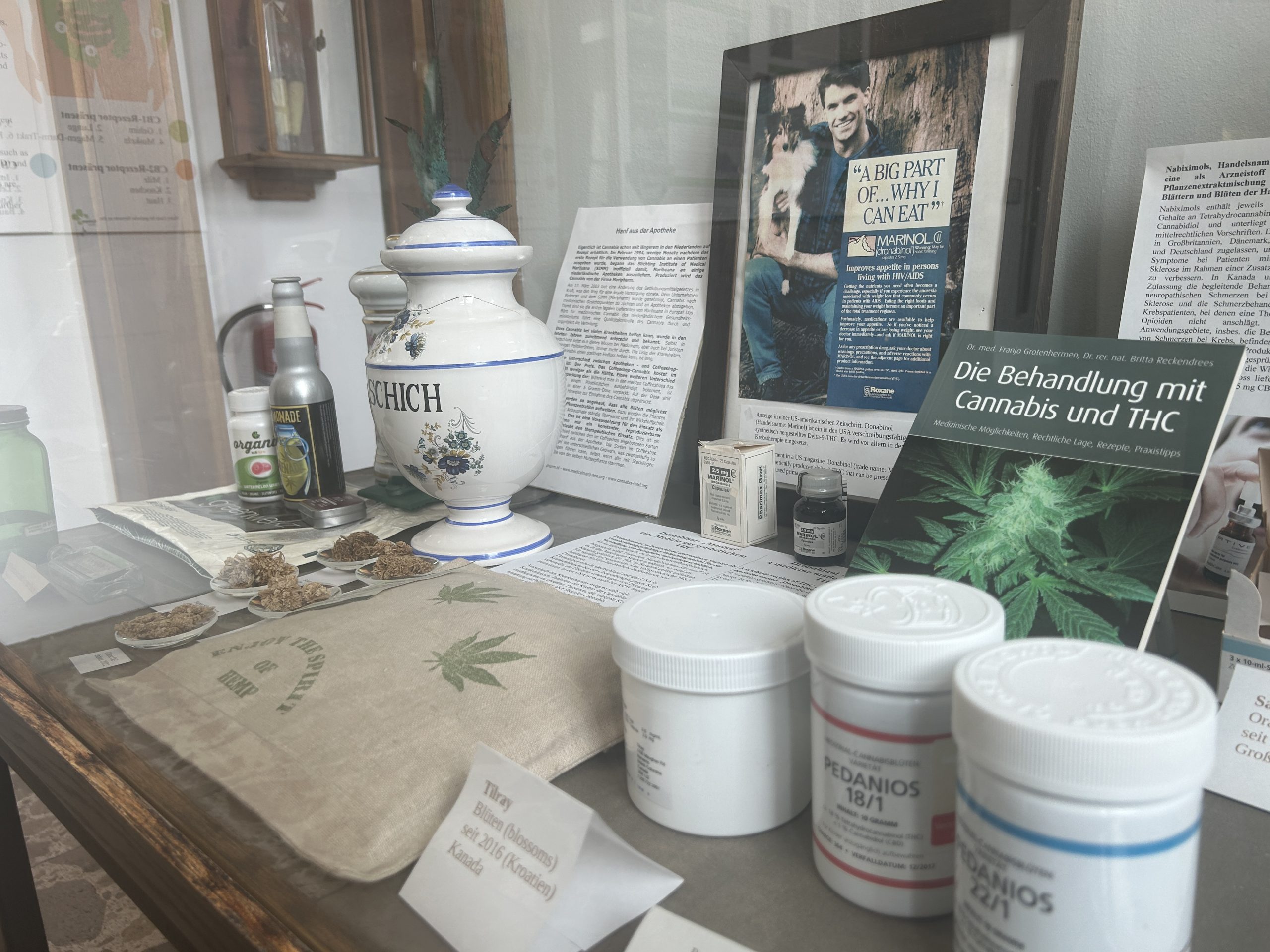

The Hanf Museum, located in Nikolaiviertel, has used its exhibits to educate about the agricultural, manufacturing, industrial, and recreational use of Cannabis since its opening in 1994.
The museum doesn’t plan to change their course of action in this new fight, leading with education about the plant and its uses. Geyer and his colleagues will continue to offer the possibility to meet and converse with potheads and put on educational events such as cannabis patient evenings. They will even begin home-grow events within the next couple of weeks, he says.
Geyer walks the familiar halls of the museum discussing various aspects of hemp's use - from cars, to boats, to houses.
Activists around the country will use this light of legality to educate and promote cannabis in all of its uses in hopes of eroding the stigma that has surrounded the plant and its users for decades.
“The fight is already lost… cannabis consumers will be more seen and will be part of the public. You cannot fear what you know. You cannot fear-monger if your neighbour is a pot smoker, or your doctor is a pot smoker or your lawyer is a pot smoker,” said Geyer.
“So this fight is over, just a matter of time.”
